The hitchhiker’s guide to the Maldives. The echeneid-host association between remoras and manta rays
2016
Zofia Drapella (MSci Marine Biology - University of Southampton)
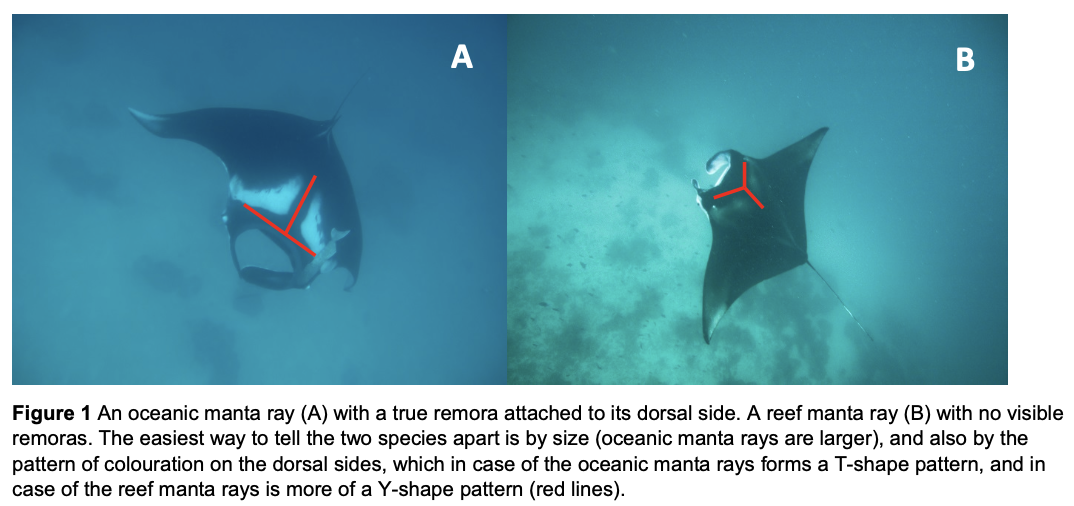
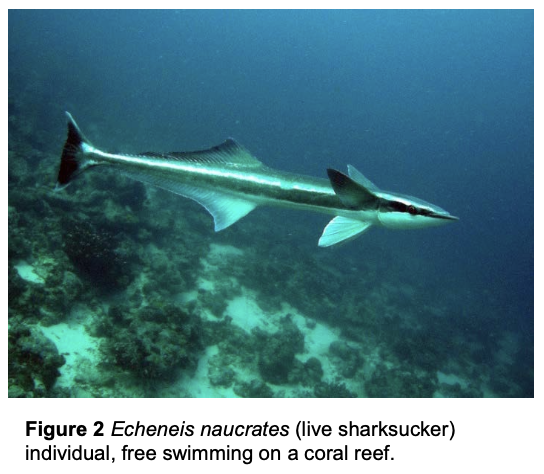
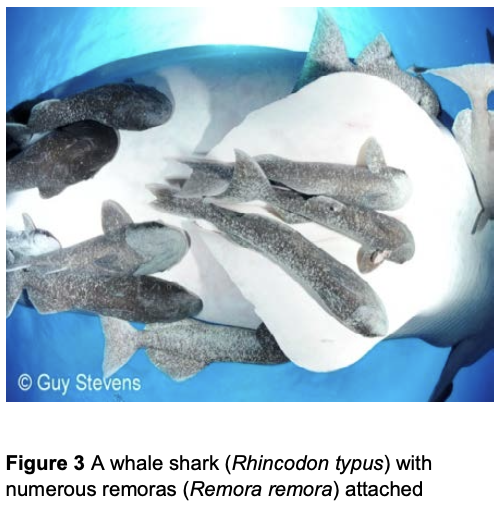
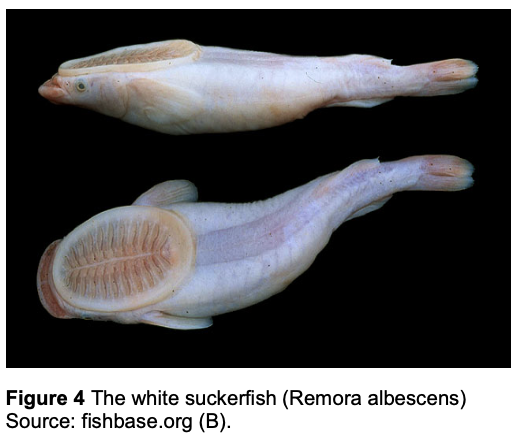

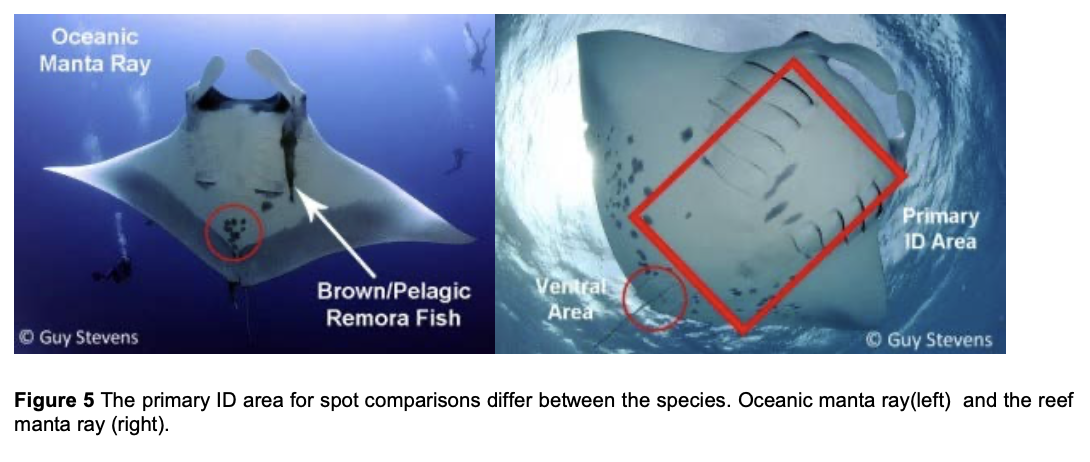
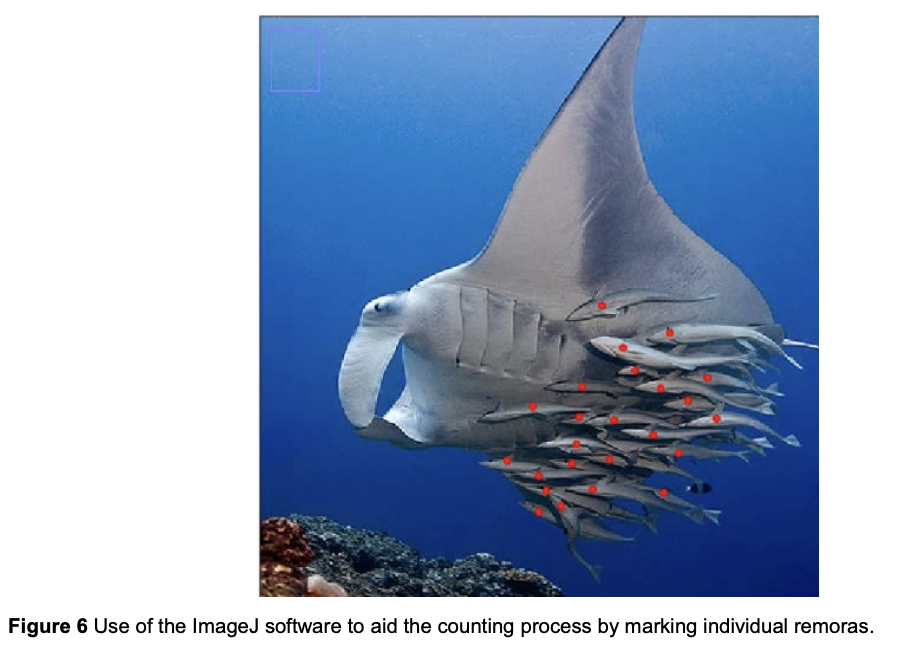
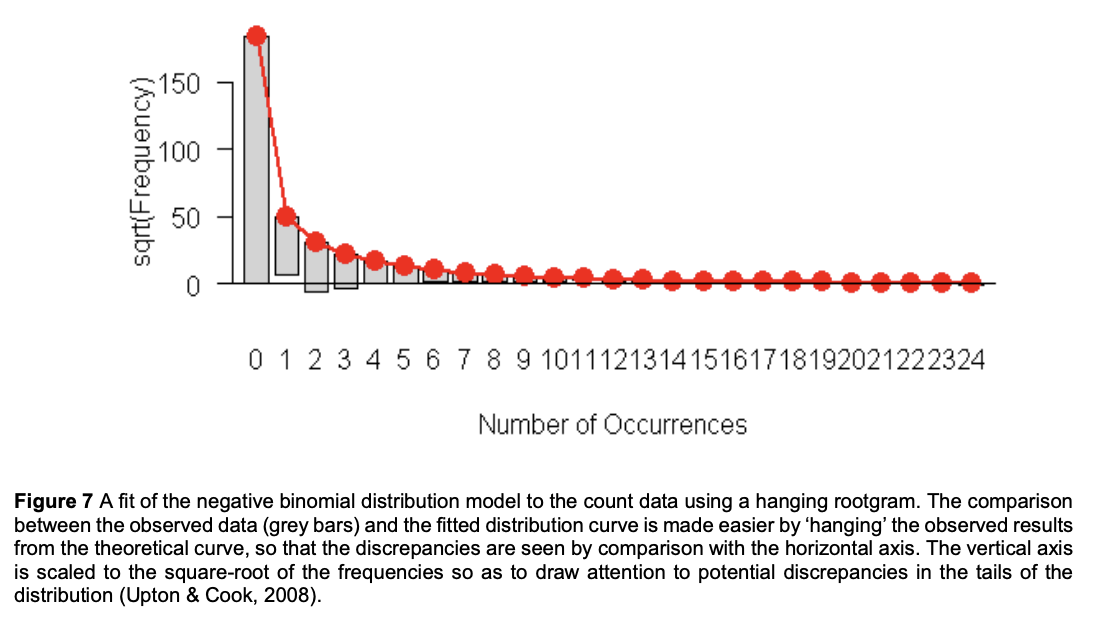
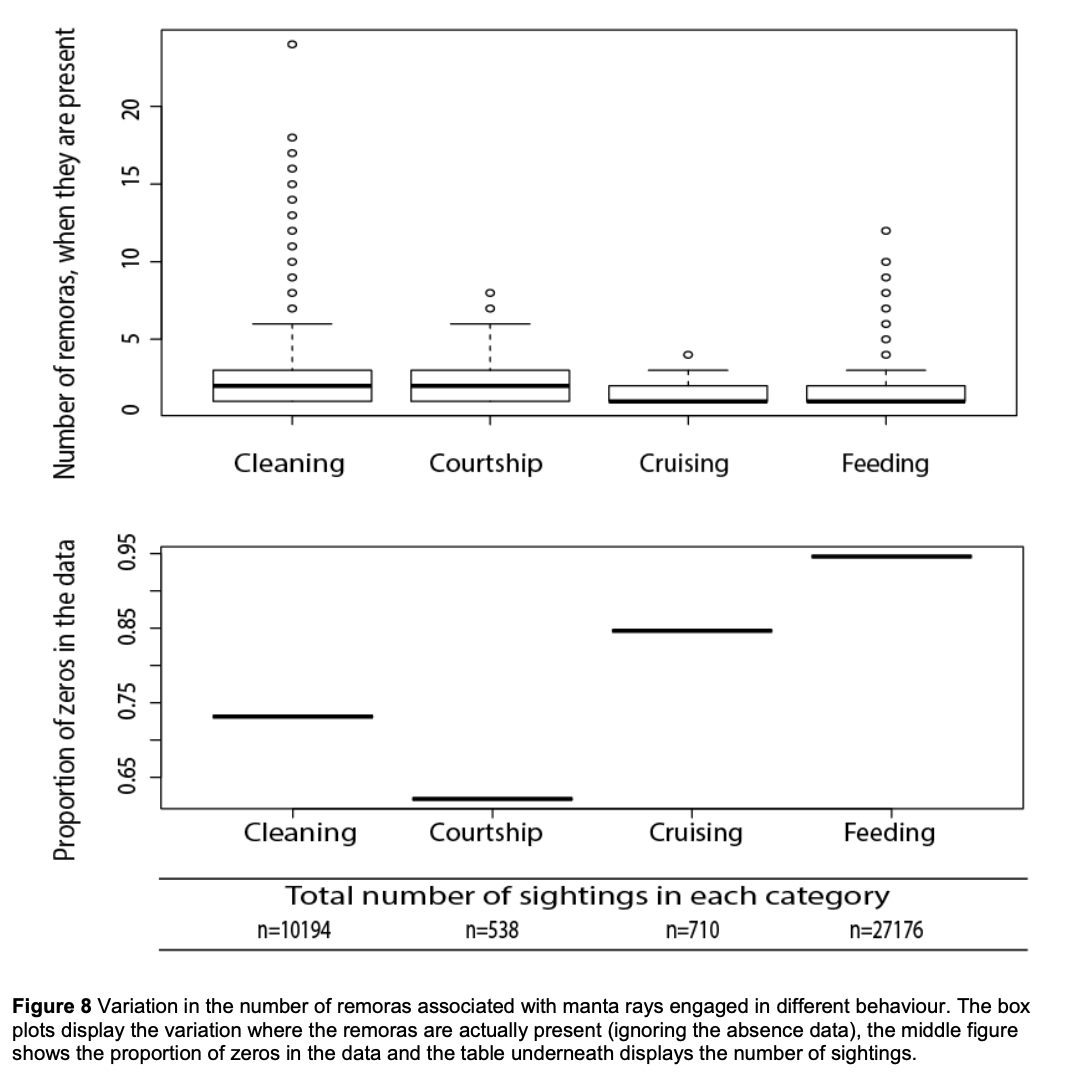
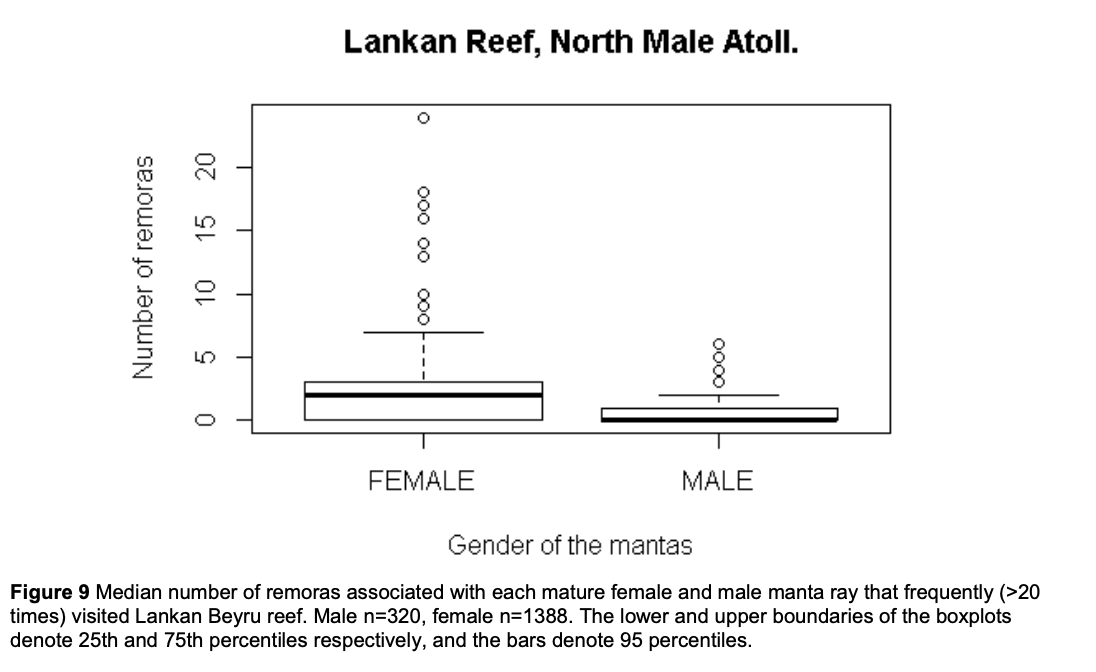
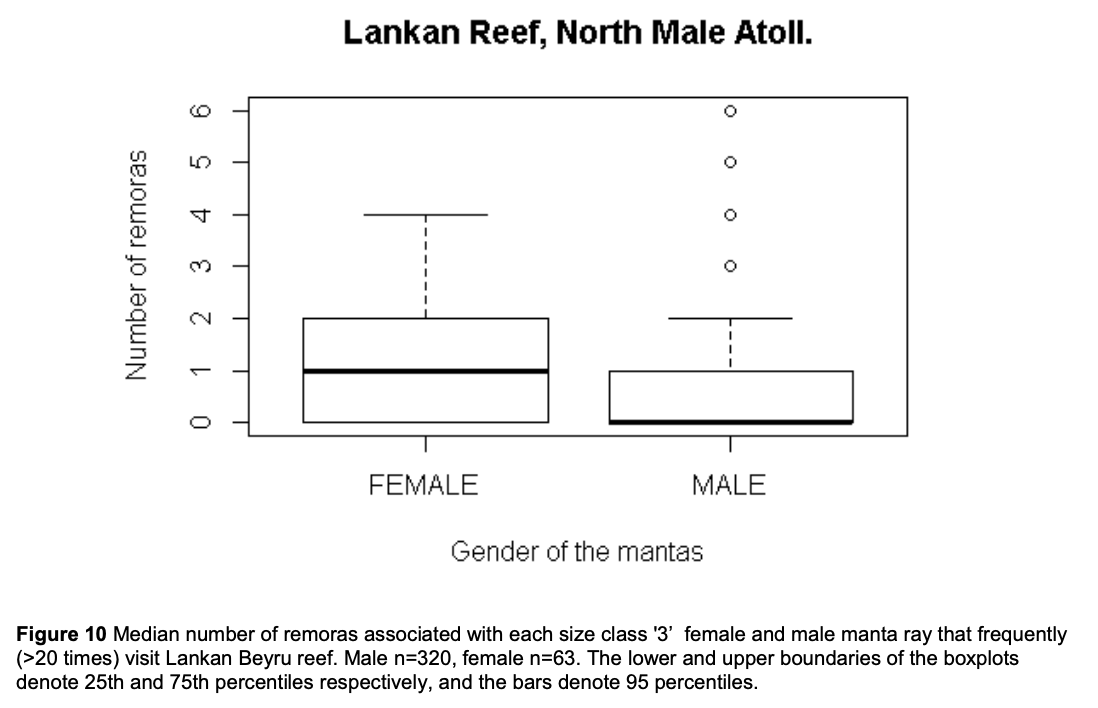
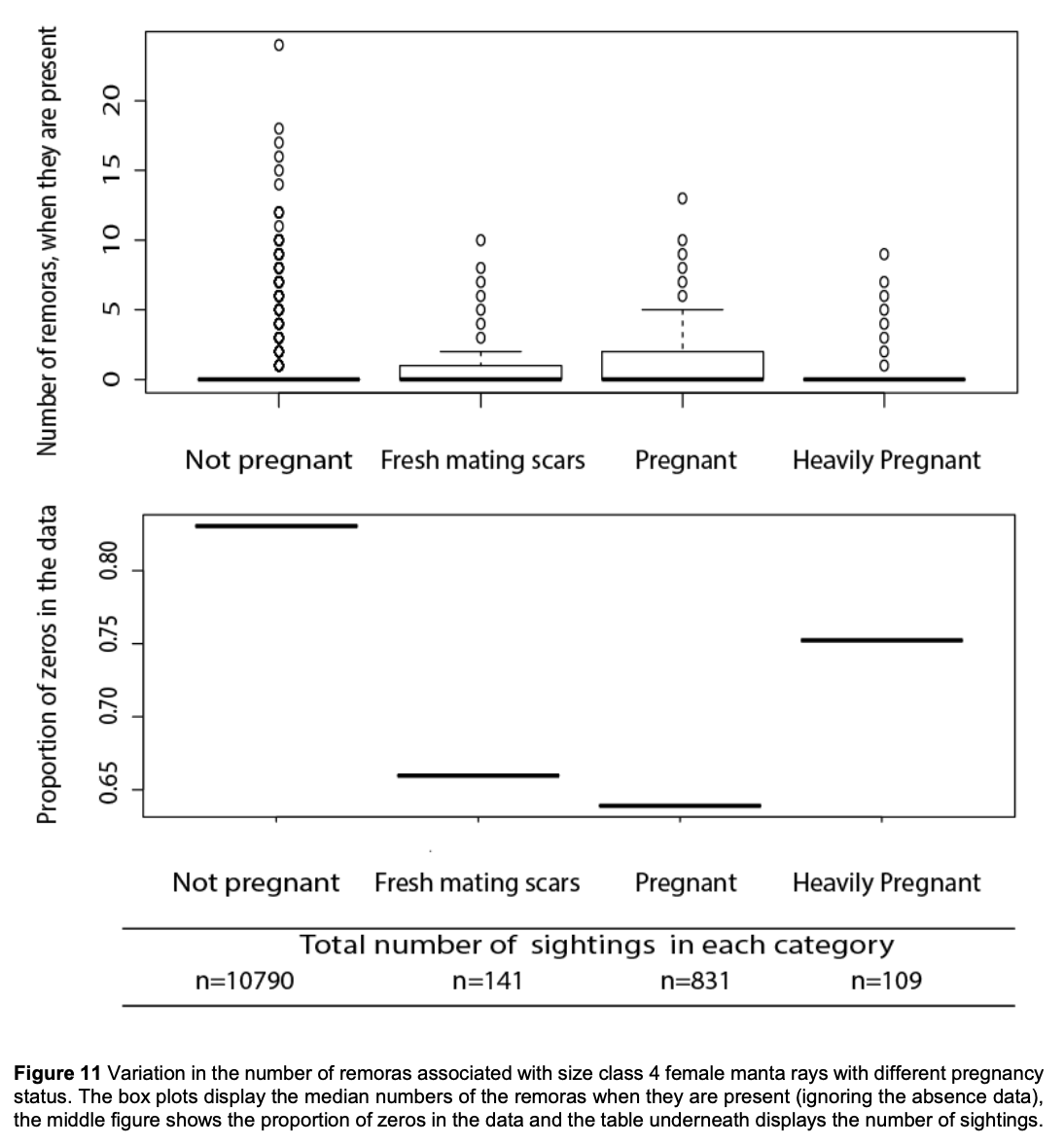
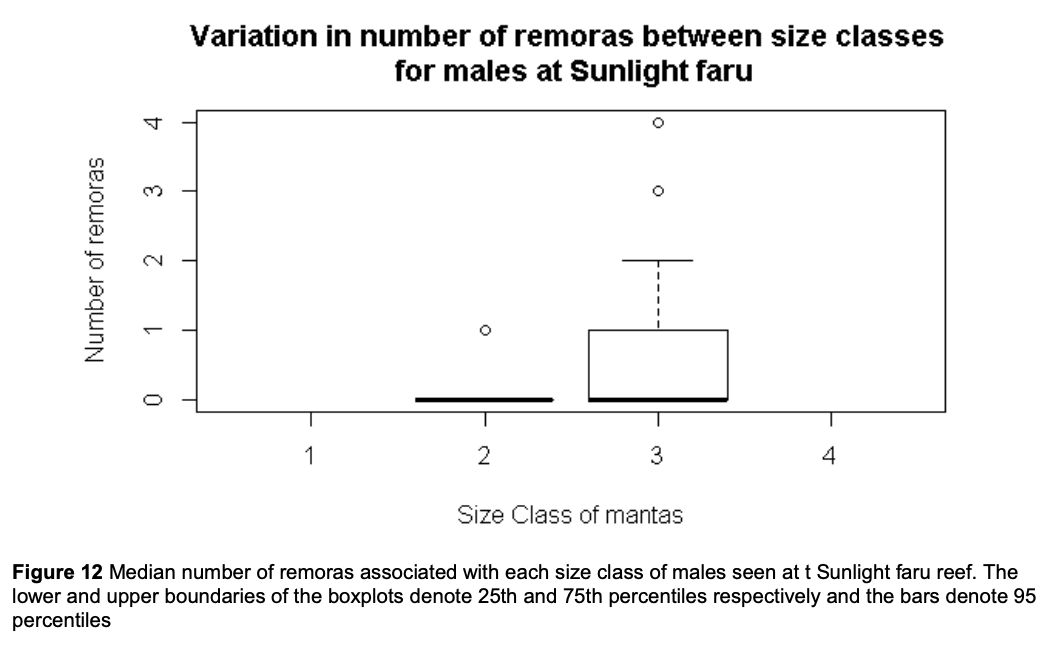
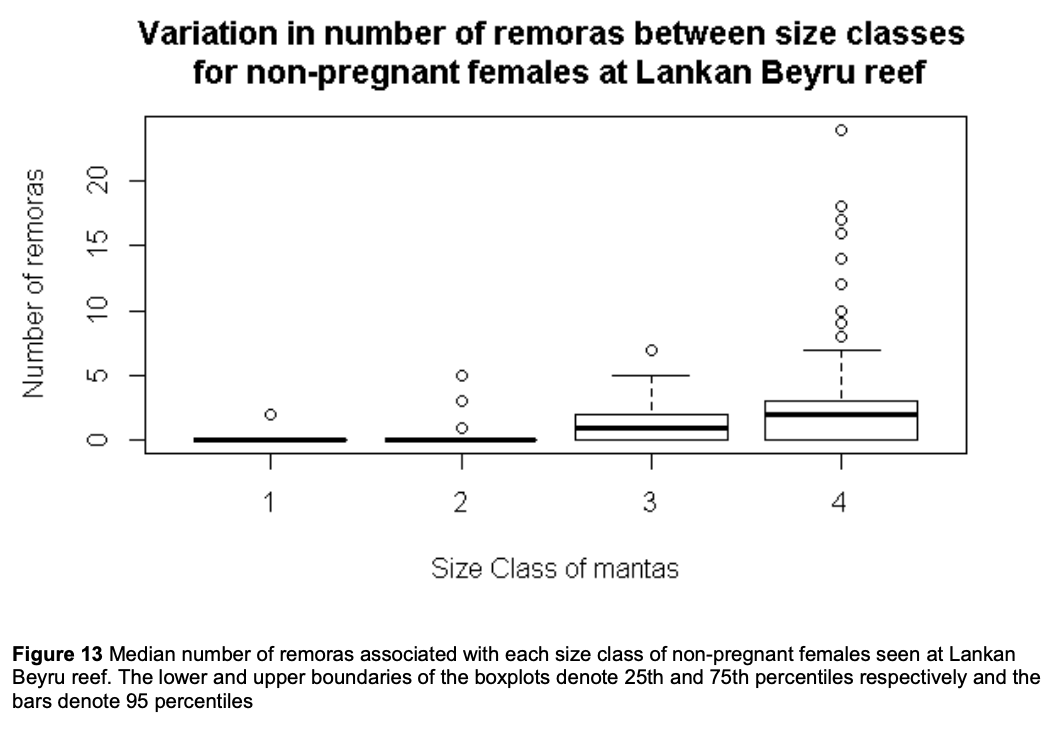
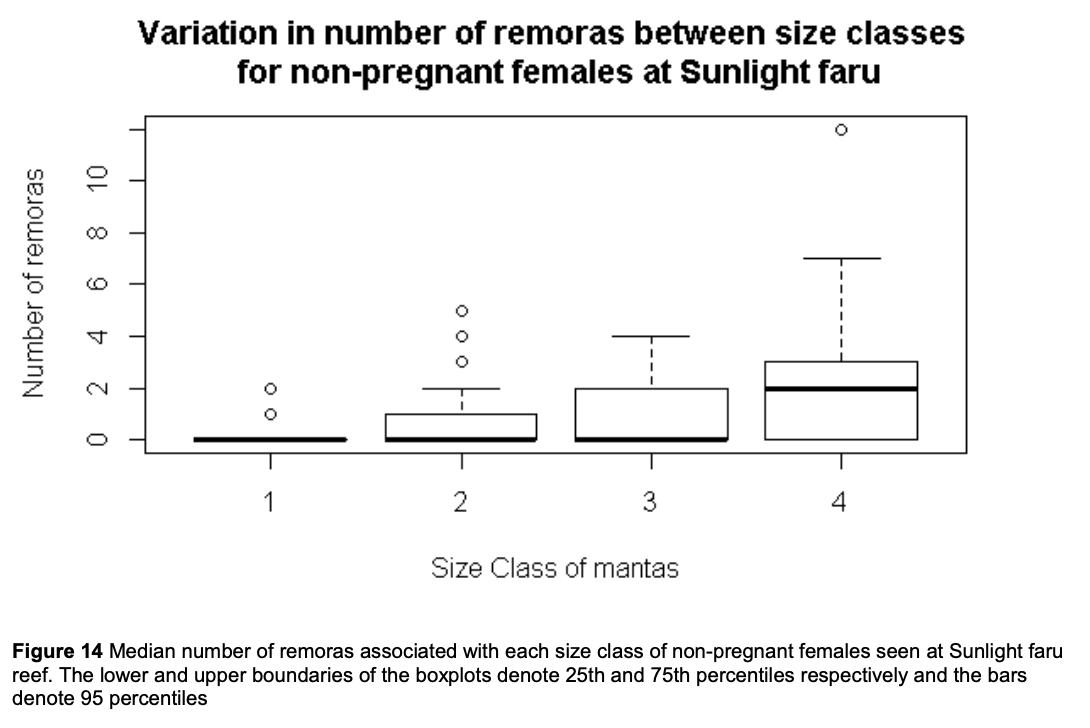
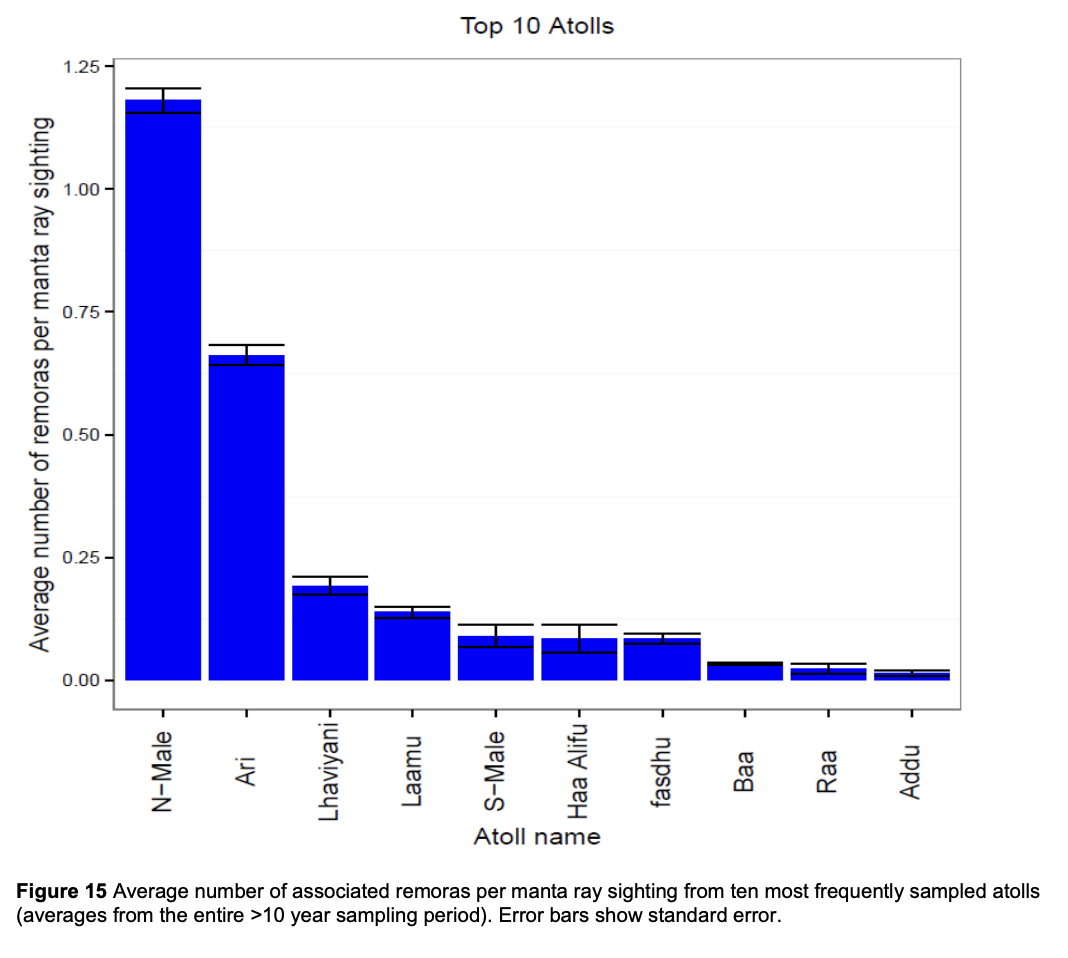
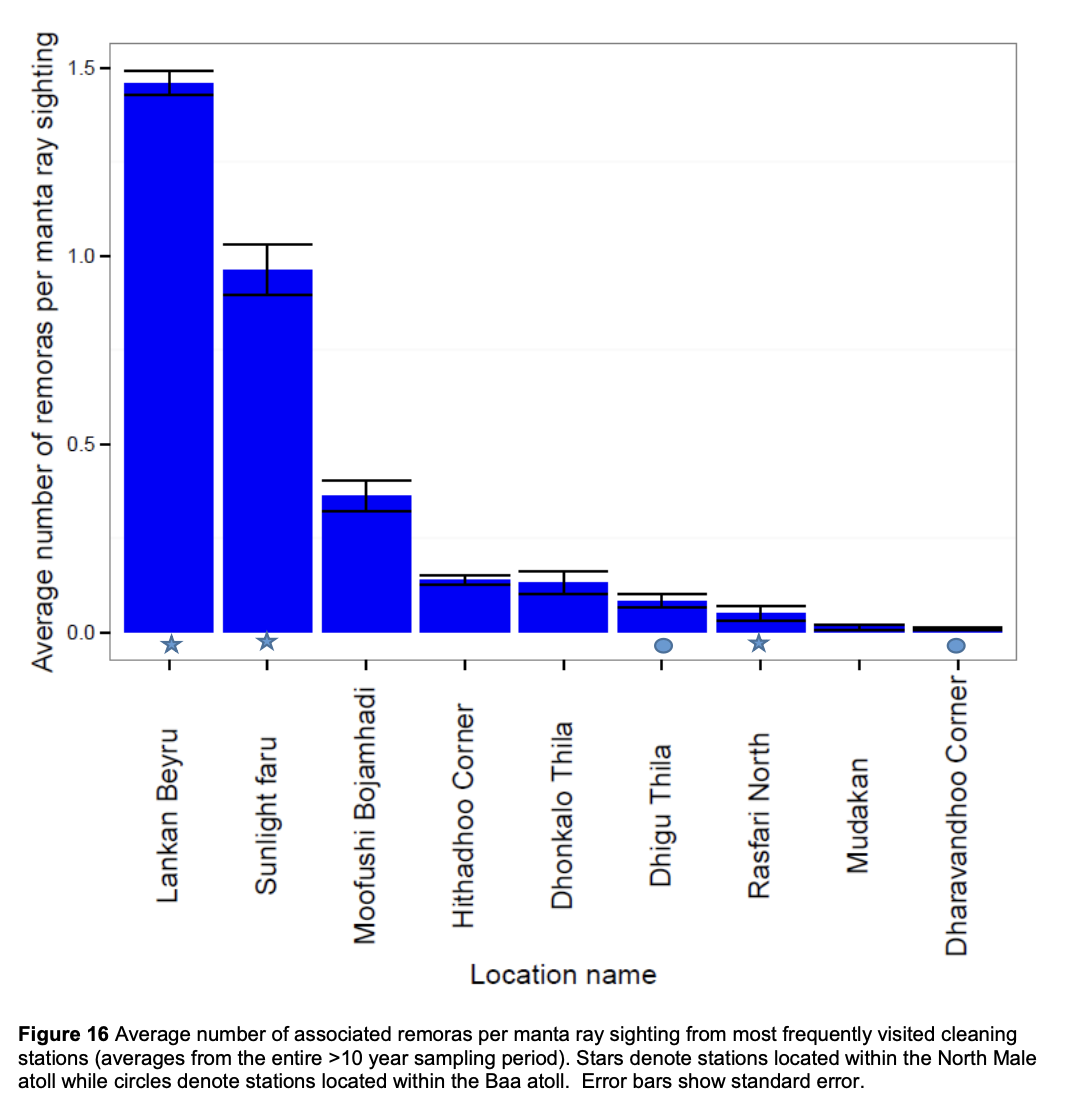

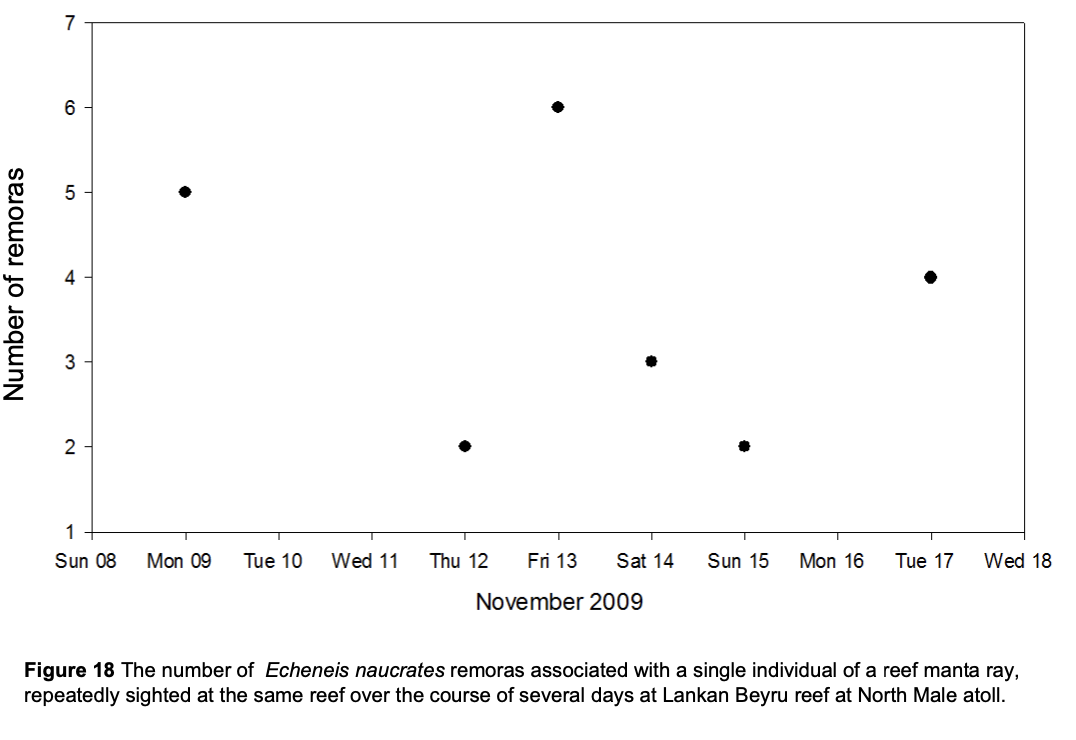
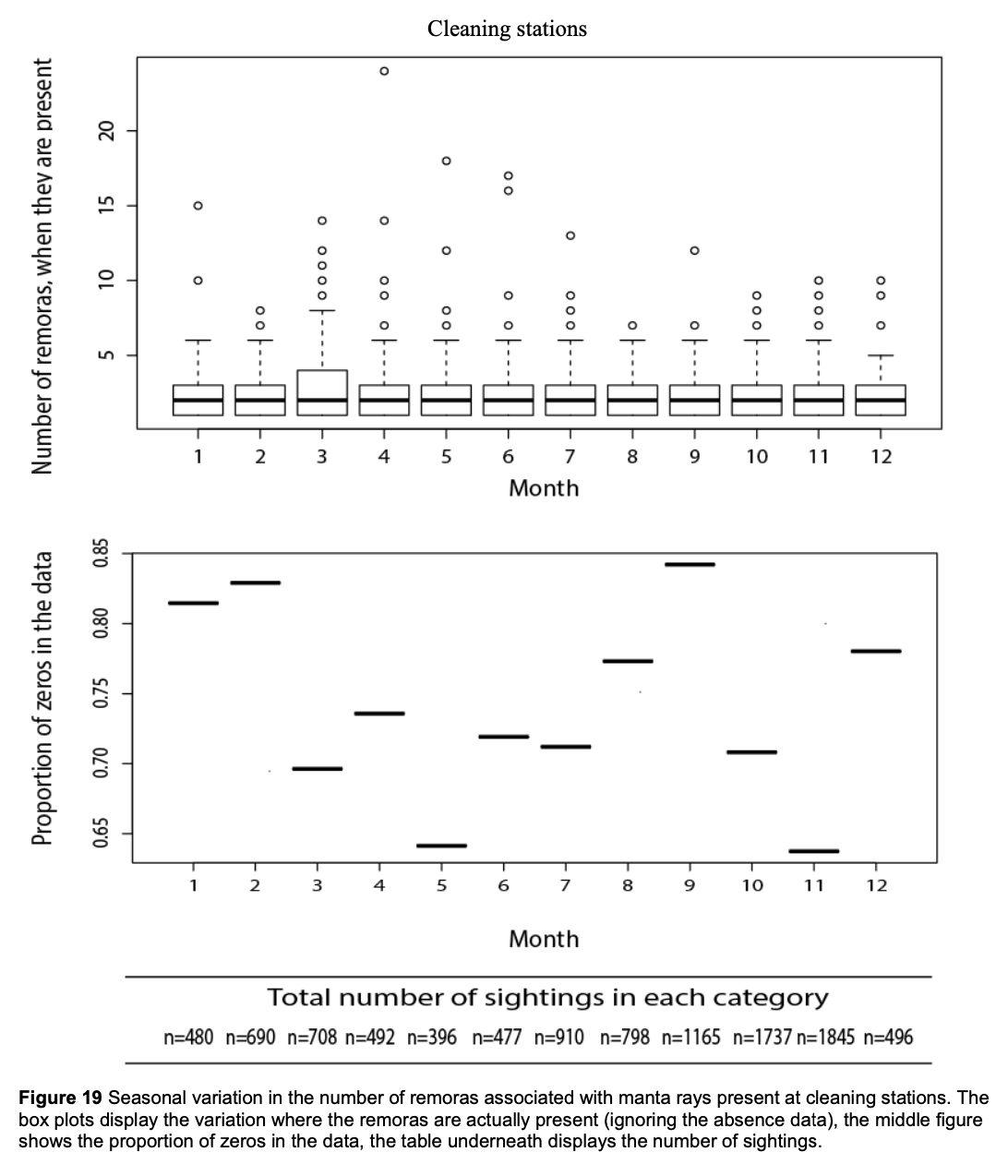
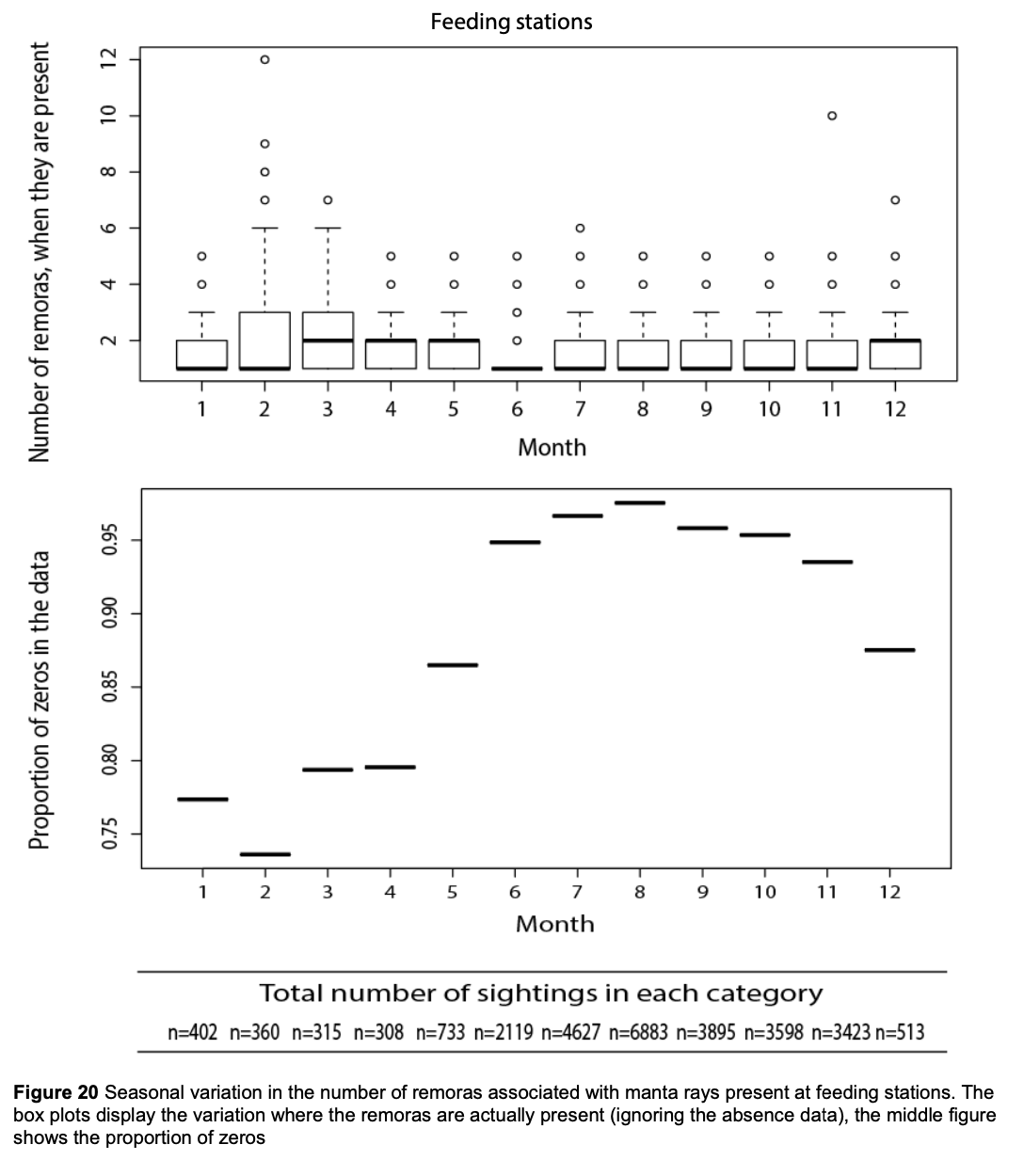
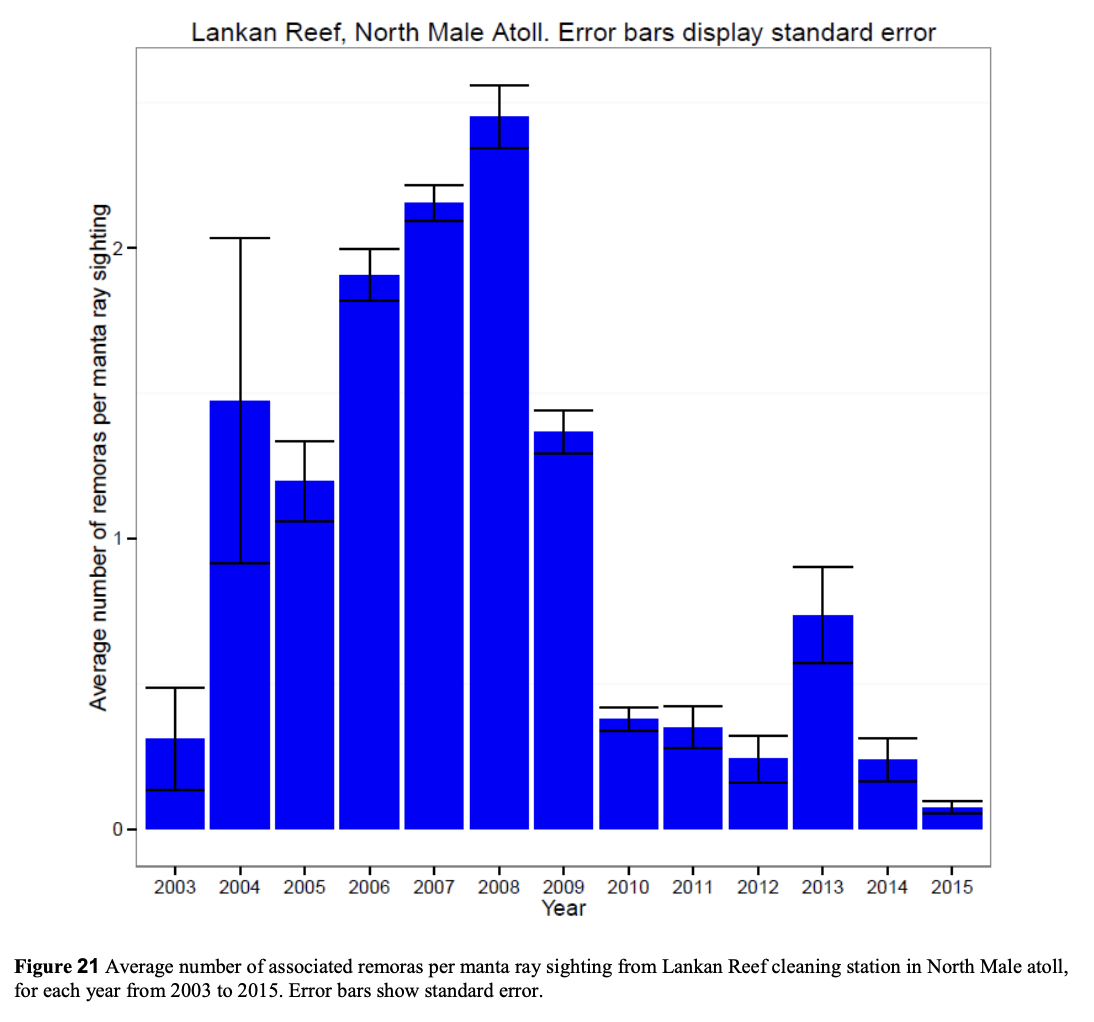
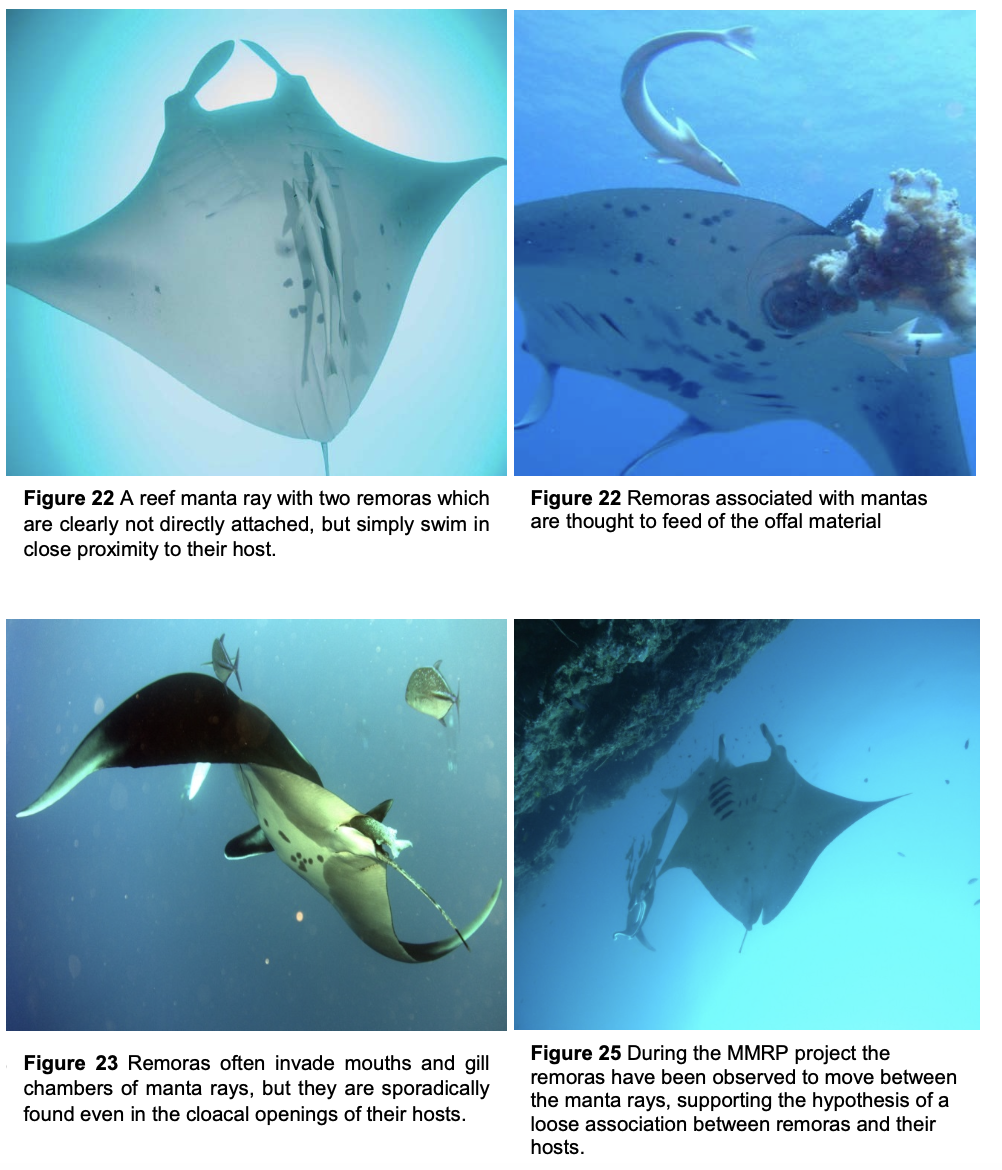
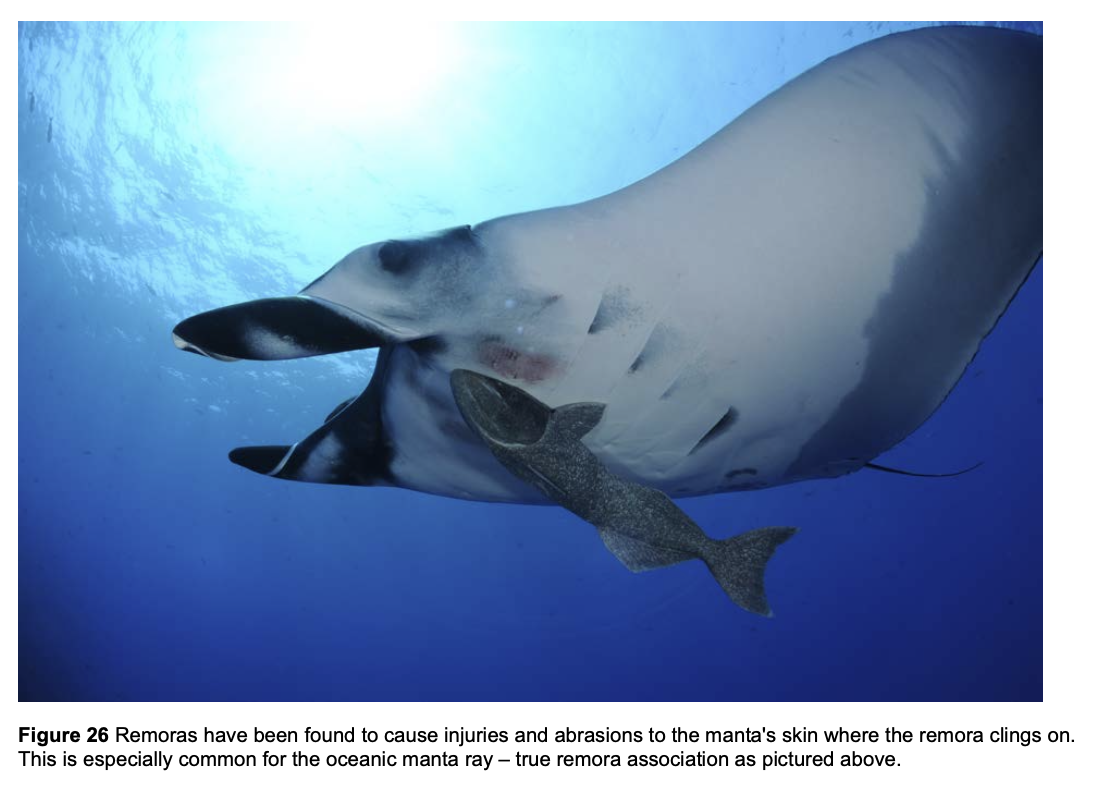
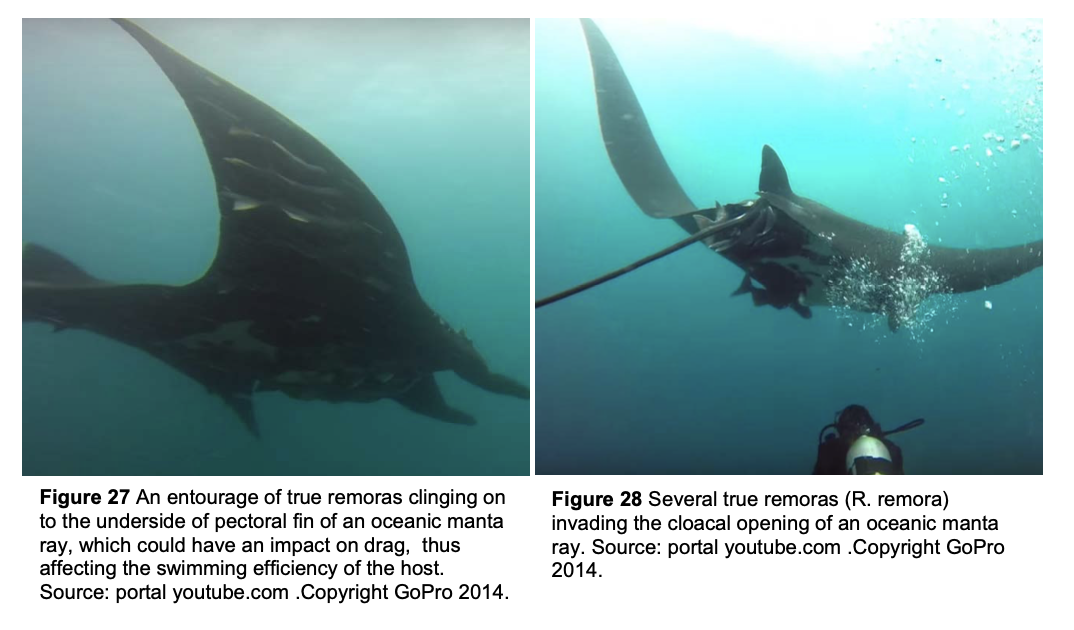
Summary: This study analysed over 38,000 sightings from the Maldives Manta Conservation Programme to investigate the relationship between manta rays and remoras. Factors like manta size, sex, pregnancy status, behaviour, and location were considered. Cleaning behaviour attracted more remoras than feeding, and pregnant mantas had more remoras. Remora distribution varied by atolls in the Maldives. Short-term analysis suggested a tentative association between reef manta rays and Echeneis naucrates remoras. Future research is needed for a clearer understanding of remora presence factors.
Abstract
“The following study utilised the photographic data (over 38000 sightings) collected by the Maldivian Manta Ray Research Project (MMRP) during a period of over ten years. The study aimed to explore the patterns of association between manta rays and remoras. Factors influencing the number of the associated remoras, such as size, sex, pregnancy status and primary behaviour of the mantas, as well as the time and location of sightings, were investigated. A zero-inflated model was utilised to help reveal which factors best explained the variation in remora numbers. There was some degree of inter-dependency between the variables, so an analysis of the entire dataset using one model proved to be of a limited value. An approach that involved manipulating individual factors and looking for differences between these factors at specific locations was taken instead. The results showed that reef manta rays engaged in cleaning behaviour had significantly more remoras associated with them than those that were engaged in feeding. Females of both reef manta rays and oceanic manta rays appeared to carry more remoras than did the males. Pregnant manta rays had a significantly higher number of remoras associated with them, when compared to similar size, non-pregnant female manta rays. Within the Maldives archipelago, spatial distribution of remora associated with the mantas was not uniform. Specific atolls such as North Male and Ari had significantly higher ratios or remoras to mantas than for instance the Baa atoll. Analysis of temporal variation over a short time scale (days to weeks) revealed that the association between reef manta rays and Echeneis naucrates remoras was of a tentative nature. The number of remoras associated with a single individual fluctuated from day to day, and they appeared to be only loosely associated with their hosts. A more controlled observational study that would allow for unambiguous tests, would be required in the future, if the exact factors determining the presence of the remoras are to be revealed.”
Author Affiliations
University of Southampton
The Manta Trust

